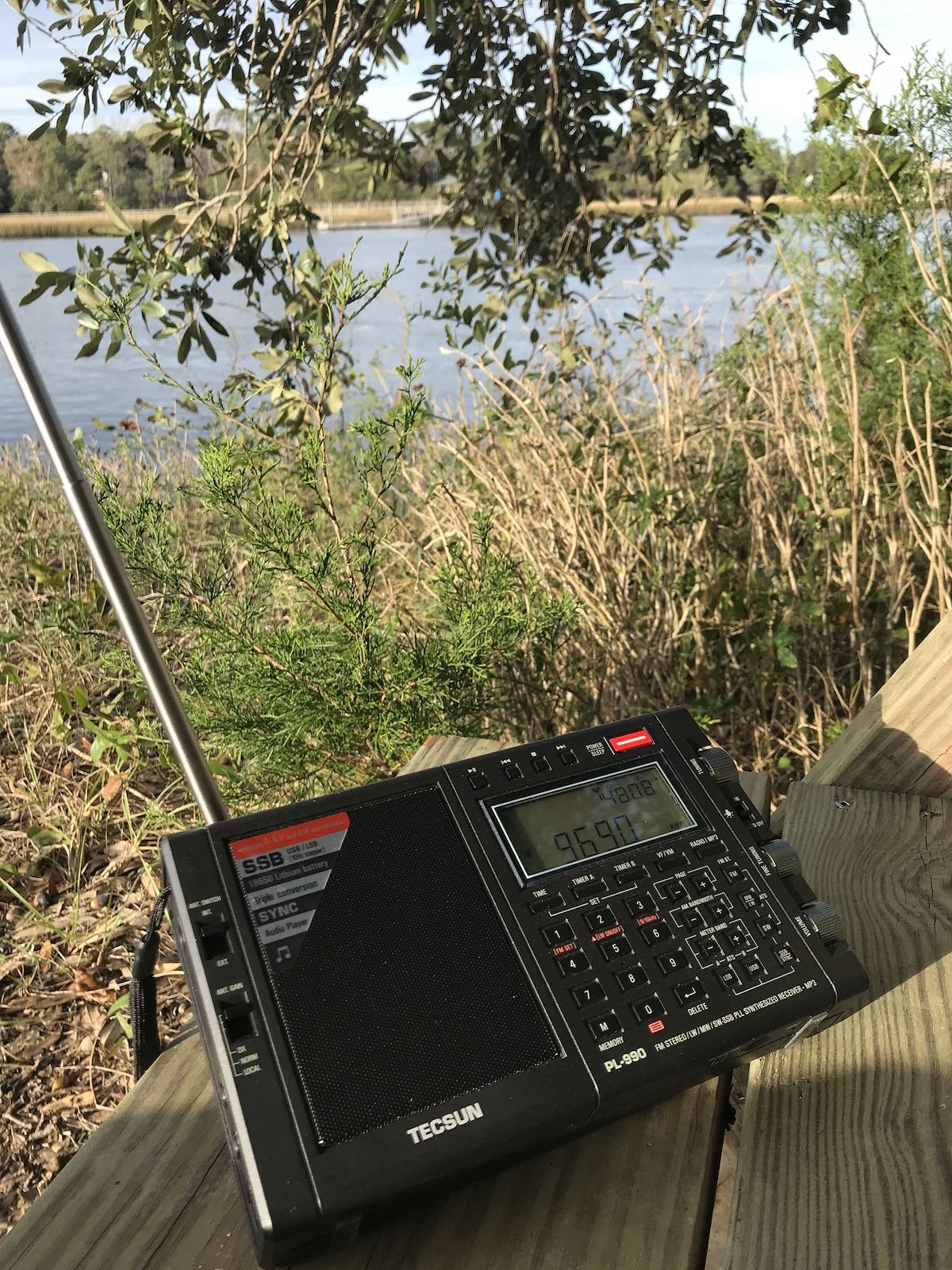 Many thanks to SWLing Post contributor, William Lee, who shares this story from CTV which focuses on the resurgence of interest in shortwave radio following the Russian invasion of Ukraine.
Many thanks to SWLing Post contributor, William Lee, who shares this story from CTV which focuses on the resurgence of interest in shortwave radio following the Russian invasion of Ukraine.
This item features our good friend, John Figliozzi; author of the Worldwide Listening Guide:
How shortwave radio is resurfacing as a tool in Ukraine (CTV)
In a world of mobile phones, satellites and the internet, some old school technology is making a major comeback. The shortwave radio, used by spies for decades to send encrypted messages, is being resurrected for the war in Ukraine.
According to Dr. Andrew Hammond, curator and historian at Washington, D.C.’s International Spy Museum, the shortwave radio “is a classic tool that was used for espionage.
“With a shortwave radio like this, you can transmit information over huge distances,” he told CTV National News.
But now, decades later, shortwave is coming back into use. [Continue reading…]

I am a retired electronics technologist that has been involved with radio since I was twelve. I started as an SWLer and have been a licensed ham and commercial radio license holder since the early 70s. Everyone loves the word “digital” and can’t think of anything but digital. Analog is great because you can turn it’s”weaknesses” into triumphs. I once asked an engineer at a Navy base’s open house about using radio that didn’t work UNTIL it was jammed. I got followed for the rest of my visit.
When I was in tech school I worked with engineers on a new 40 channel CB when they were first coming out. We were licensed to operate in the new frequencies. We ran into a jerk operating a linear and vfo on those frequencies illegally. He got into an argument with my boss who was testing the radio mobile. Every time we changed frequencies, so did he and he jammed us with a kilowatt of power and a beam antenna. Being ham operators, we knew our AM radios would produce a beat note when he keyed down on us continually. We used the beat note and continued our work using Morse code until he gave up.
There are many ways to use noise and interference to your advantage. The same is true of image frequencies, distortion, and harmonics.
I have never seen so many inexpensive shortwave receivers on the market. They are even to be found in women’s catalogs! Unfortunately, shortwave listening isn’t as much fun as it used to be. The government run stations are practically all gone. I never hear communist block stations promising to bury us anymore. The BBC isn’t running hour long programs on the history of sealing wax. There are no more “interval signals” to let one know who was about to start broadcasting. I haven’t heard numbers stations or “official bulletin stations” in decades. However, political and religious crackpots abound to keep the bands alive until their next use.
After your visit to the Navy base, did your receive a visit from the FBI?
After your visit to the Navy base, did you receive a visit from the FBI?
Voice of America was responsible for some great Jazz players to develop behind the Iron Curtain.
OHOOOO mambo jumbo closeup on USSR on the S38D handled with white gloves ….
Any radio set of the gazillion produced at the time has USSR on it.
There was a time when any radio story on the Montreal CTV station, well actually CFCF TV, would inevitably call in Sheldon Harvey for commentary.
According to the article “the BBC is using [shortwave] to transmit it because it’s a lot harder to block those transmissions.” A lot harder than what? The Telegram smartphone app is not blocked or censored in Ukraine or Russia.
However, shortwave signals have been jammed effectively for many years by the Soviet Union, China, North Korea, Cuba and others:
https://swling.com/blog/tag/shortwave-radio-jamming
It is very easy to “block” smartphone data. Simply destroy or compromise the in-country infrastructure. SWBC can be jammed but simple changes in frequency are counter-measures. The infrastructure remains in place.
The NY Times and BBC Russian are available on the Telegram app. Telegram is not being blocked or censored and can be accessed by anyone in Ukraine or Russia with a smartphone:
http://www.nytimes.com/2022/04/16/world/europe/russian-propaganda-telegram-ukraine.html
Of course, you are right … The Telegram application is not blocked according to your statement. Reporters Without Borders has announced that the RFI – Radio France International website is back online: https://rsf.org/fr/rsf-remet-en-ligne-le-site-de-rfi-en-russie
However, listening via Internat is traceable unlike listening to Shortwave which is anonymous and untraceable! Today, listening to Shortwave is very easy with an ultra-portable DSP receiver the size of a packet of cigarettes!
https://swling.com/blog/2022/03/paul-is-impressed-with-the-hanrongda-hrd-747/
Long live shortwave!